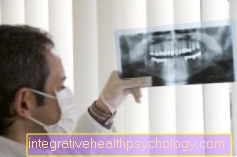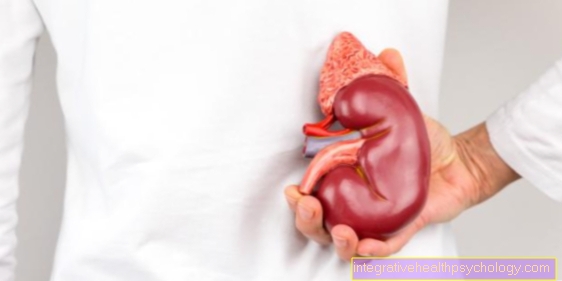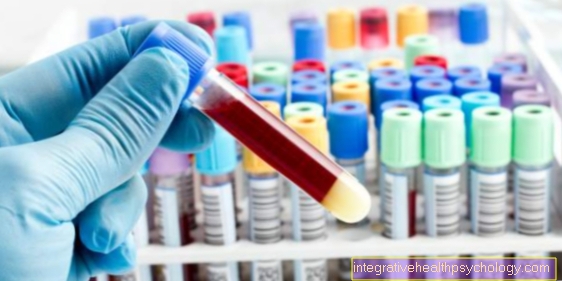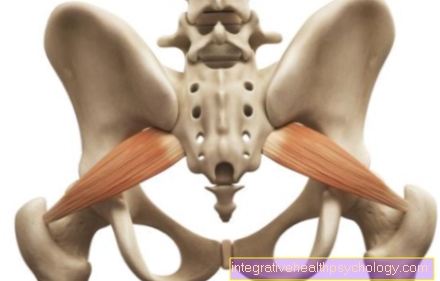Pulpitis on the tooth
introduction
Pulpitis on the tooth is inflammation of the tooth pulp or inflammation of the tooth nerve. In most cases, the cause is untreated, deep caries close to the pulp. The bacteria penetrate the tooth and a defense reaction of the tooth ensues, which leads to an inflammation of the tooth nerve. In addition to deep caries, there are other possible causes for the development of pulpitis. These include Trauma, deep gum pockets, or tooth fractures. A distinction is made between reversible and irreversible pulpitis.

causes
The main cause of the development of pulpitis is an untreated tooth decay near the pulp. Toxins from caries near the pulp (Caries profunda) and subsequent bacteria reach the tooth pulp. This initially reacts with hyperemia, i.e. increased blood flow. The purpose of this is to create more defense cells in the affected areas to fight the bacteria. The hyperemia then turns into an inflammation of the tooth nerve. There is strong sensitivity to cold and heat and furthermore to knocking and pressure sensitivity. In addition to caries profunda, there are other possible causes for the development of pulpitis. These include Infectious causes, diseases of the maxillary sinus, acute inflammation around the tip of the root or in the area of neighboring teeth, therapeutic causes or haematogenic causes. Often the cause of pulpitis is also descending periodontitis. This means that the periodontal apparatus, the periodontium, is damaged or inflamed. The inflammation can penetrate into the area of the tooth pulp from the outside through deep gum pockets.
Concomitant symptoms
In addition to the pain caused by cold or warm stimuli, as well as the throbbing and throbbing pain, accompanying symptoms often occur. Often times it can be very painful when biting. Another symptom can be a "big cheek". This is caused by water retention in the inflamed tissue. A so-called edema develops. Furthermore, fever, tiredness and fatigue can be accompanying symptoms of pulpitis. When the bacteria reach the bloodstream, the body reacts with a defensive reaction that results in fever and fatigue. Headaches can also be a sign of pulpitis in conjunction with the above symptoms. However, the nature of the accompanying symptoms is very individual and cannot be generalized. According to new studies, a pain-inducing knock test (percussion test) is a sure sign of pulpitis.
Pain
If pulpitis is present, pain or sensitivity to cold or heat stimuli are the main symptoms. This can happen in any everyday situation. The pain is described as stabbing and pulling and, in contrast to the presence of tooth decay, often lasts longer. They are also often described as permanently throbbing. In acute pulpitis, the pain is very intense and can occur at continuous intervals. Often times, the pain of acute pulpitis can worsen when lying down. However, pulpitis can also occur with almost no pain. In that case it would be chronic. The pain is less severe than in the acute case. Due to the increased pressure on the tooth nerves, the patient is often unable to differentiate from which tooth the pain, which occurs rarely, originates.
Read more about this: Pain at the root of the tooth
Inflammation
The name of the disease pulpitis indicates an inflammation by the ending -itis. This inflammation can have many different causes. In the most common cases, deep caries is the cause of pulpitis. The bacteria in the tooth decay produce toxins, so-called endotoxins, which penetrate the tooth pulp. The tooth reacts with a defense reaction and inflammation develops as a result. Sometimes the inflammation is accompanied by swelling or reddening of the gums. This depends on the spread of the inflammation. It is also possible that the inflamed tissue could not be completely removed during the treatment. When this happens, new inflammation forms and needs to be treated again.
More information can be found here: Root inflammation
therapy
In general, pulpitis must always be treated by a dentist. If left untreated, it would lead to pulp necrosis and thus to death of the tooth. Over-the-counter pain relievers can be used for initial pain relief. These include Ibuprofen. This has anti-inflammatory and analgesic properties. As a rule, the therapy consists of a root canal treatment. The canals of the tooth root are prepared with files and all bacteria are removed. The channels are then filled with a rubber-like material (gutta-percha). If the cause of the pulpitis is deep caries, the first step in treatment is to remove the caries. Depending on the extent to which the inflammation has spread, it may also be necessary to perform a root syringe resection.
You might also be interested in this topic: Course of a root treatment
Diagnosis of pulpitis
When diagnosing pulpitis, certain tests are performed to distinguish between reversible and irreversible pulpitis. In general, both types of pulpitis often cause severe spontaneous pain. These can be caused by cold or heat stimuli or by knocking. A distinction is made between the stage of reversible pulpitis, in which hyperemia is still present, that of irreversible pulpitis, in which the inflammation has already progressed, and the stage of pulp necrosis, in which the tooth nerve has already died. Various tests are carried out for diagnosis. In the case of reversible pulpitis, the reaction to a cold stimulus is greatly increased, to a warm stimulus it is normal and the patient does not feel any pain when knocking on the tooth (percussion). In contrast, the sensation of pain to a heat stimulus is greatly increased in the presence of irreversible pulpitis and the percussion is positive. This means the patient has pain when knocking on the tooth. Furthermore, one can differentiate between acute, i.e. painful, or chronic, in many cases painless, pulpitis.
Duration of healing
The duration of pulpitis generally depends on the cause of its development. If the pulpitis is caused by deep-seated caries, the latter will in all probability develop for several years. Pulpitis can therefore only last a few weeks or exist for several months. The duration of pulpitis depends on the individual pain sensation and, as a result, on the selected time of treatment. It is therefore essential to follow up on the complaints and symptoms in order to minimize the duration of pulpitis and to improve the prognosis of the tooth.
Pulpitis prognosis
Early diagnosis and the associated early therapy are essential for a good prognosis for the tooth. If left untreated, pulpitis would lead to pulp necrosis and ultimately loss of the tooth. Periodontitis, including pulpitis, is the most common cause of tooth loss. Detected and treated pulpitis generally has a good prognosis.However, it is possible that not all bacteria have been eliminated and inflammation may develop again. The most important thing for a good prognosis is your own cooperation through very good oral hygiene. Furthermore, regular follow-up appointments at the dentist should be attended.

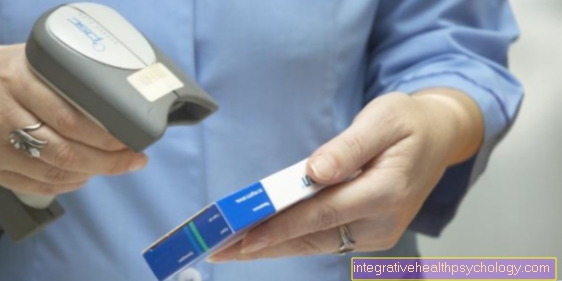






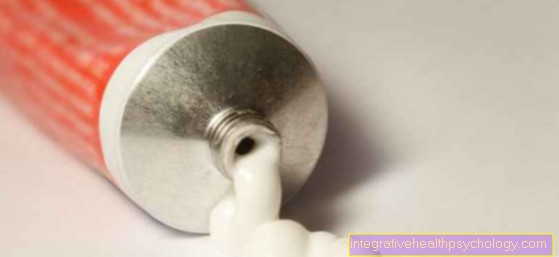




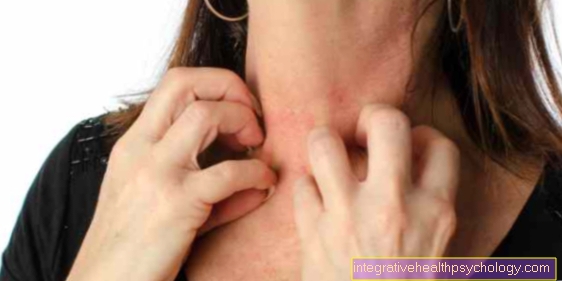



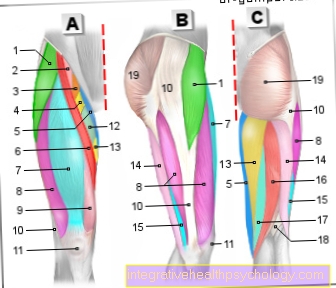
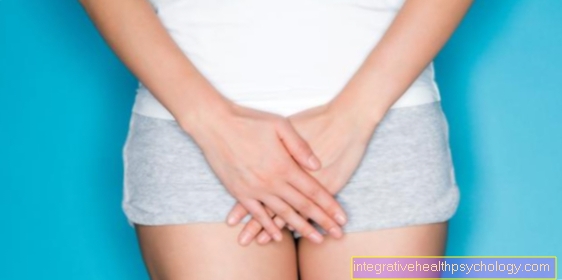



.jpg)
